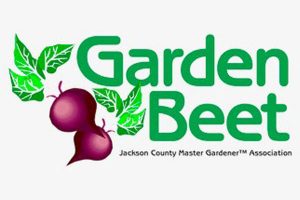
It’s time once again for Cucurbita pepo, (from the Greek pepon, meaning large melon). With its delicious flesh and delightful design, it’s become a familiar icon and symbol of autumn. It’s no wonder Peter the Pumpkin Eater dined with delight, and Cinderella’s fairy godmother chose a pumpkin to conjure her creative carriage.
become a familiar icon and symbol of autumn. It’s no wonder Peter the Pumpkin Eater dined with delight, and Cinderella’s fairy godmother chose a pumpkin to conjure her creative carriage.
Pumpkins are a member of the Cucurbitaceae family, along with squashes, muskmelons, watermelons and gourds. While pumpkins are classified as winter squashes, not all squashes are pumpkins. Pumpkins are actually fruits – their seeds develop from mature ovaries in their blossoms.
Despite somewhat unclear origins, the earliest records of domesticated pumpkin seed remnants (and consumption) date back to around 7000 BC and 8750 BC in Oaxaca, Mexico. There’s evidence of pumpkin cultivation in North America (Missouri in 4000 BC and Mississippi in 1400 BC), and Central America. Pumpkins were also shipped to Europe and other parts of the world during the 16th century.
The pumpkin’s versatility has given them great value since their original cultivation, and they have a long culinary and medicinal history. Native Americans roasted and dried pumpkin strips for winter storage and eating. American colonists originated the “pumpkin pie” by removing seeds, then filling pumpkin cavities with honey, milk, and spices, and next baking them in hot ashes. (No pan to wash here!) Seeds were also likely roasted by the Aztecs for high-protein snacks.
The pulp and sap of pumpkins have long been used medicinally in North and Central America for burns. Pumpkin seed oil, another by-product, usually mixed with other oils, is used for cooking and salad dressings.
Pumpkins are high in iron, vitamin A, protein and fiber that provide anti-inflammatory, antioxidant and antifungal properties. The cooked flesh is delicious in pies, soups, pasta, salads, desserts, preserves, candies, beer, hot spiced cider, and pumpkins can be roasted and dried. You can cook the edible leaves like any greens, stuff and fry the flowers and roast seeds (pepitas).
Pumpkins come in a multitude of colors, shapes, and sizes besides the classic rich-orange ribbed-spheres. Their size varies from petite decorative pumpkins to gigantic monsters (largest ever recorded — 2,323 pounds). Most grow to 20-40 pounds with field pumpkins up to 65 pounds. Their decorative contributions are many, including dried strips woven into mats by Native Americans, mini varieties made into household decor, and of course, Jack O’ Lanterns; a Celtic tradition started with smaller turnips, beets, and potatoes in Ireland. Irish immigrants in America readily carved pumpkins into lanterns for scaring off tortured souls (like Stingy Jack*) on Halloween.
Planting pumpkins is easy. Start seeds indoors in good potting soil, sowing 3-4 seeds 1” deep about 10-14 days before the last frost in 4” pots. Sow seeds the same depth outside (after last frost) in 5” high 14” wide flattened mounds that warm more quickly than flat soil.
Keep all consistently moist and keep indoor seeds at 70-75°. Once sprouted (in about 5 to 8 days), acclimate inside seedlings a week before planting outside. Provide generous amounts of rotted compost for nutrients and mulch. Supplement with balanced organic fertilizer and plenty of horizontal (or vertical) space.
Whether planted for pies, Jack-o-lanterns, or giant first prize, the mighty pumpkin applies!
* The legend of Stingy Jack
The Celtics once walked on the eve of October 31st with lanterns carved from turnips, (called jack-o-lanterns), whose lights were believed to keep away evil spirits. It’s believed these lanterns got their name from a stingy, mean old man named Jack who was denied passing through heaven’s gates after dying. After going to Hell, the devil gave him coal that Jack placed in a carved-out turnip to guide his way while looking for a place to stay. Immigrants to America continued this tradition, eventually using pumpkins instead of turnips.
Resources:
Armand’s Harper Valley Farms
https://harpervalleyfarms.com/history-of-pumpkins/
HerbaZest
https://www.herbazest.com/herbs/pumpkin/pumpkin-origin-history
Pastorino Farms
http://www.pastorinofarms.com/abt_pmks/history.htm
Seed Sources:
Baker Creek Heirloom Seeds
http://rareseeds.com
Pinetree Garden Seeds
http://superseeds.com
Territorial Seed
http://territorialseed.com
Recipe: Pumpkin Scones
Preheat oven to 400F°.
Cut a piece of parchment paper to cover cookie sheet.
2 cups white, whole wheat (at Natural Grocer) or oat flour
1 cup regular organic rolled oats (not quick or instant)
¼ teaspoon sea salt
⅓ cup organic coconut sugar
1 teaspoon ground cinnamon
½ teaspoon each ground nutmeg and ginger
¼ teaspoon ground cloves
1 tablespoon fresh grated ginger root
½ cup chopped toasted walnuts
(almonds, pecans or filberts) optional
½ cup organic flame raisins
Zest from one organic lemon
¼ cup olive oil
⅔ cup pureed pumpkin
½ cup buttermilk
Extra buttermilk and organic coconut sugar (for topping)
Mix together the flour, oats, sea salt, sugar, ground spices, grated ginger, and lemon zest. Mix in the nuts and raisins. Pour in the olive oil and blend until mixture is crumbly. Pour in the pumpkin and buttermilk, then mix with wooden spoon or clean hands until the mixture clings together, then gather into a ball. Transfer to parchment paper and flatten to an 8” to 9” round.
Score the round into 8 wedges with a sharp knife. Brush the top with a little buttermilk and sprinkle with some coconut sugar. Bake in preheated oven for about 15 minutes until the top is golden. Serve warm or freeze for longer storage.


 It has been a very productive month!
It has been a very productive month!







 years, they are providing the perfect summer peaches and nectarines.
years, they are providing the perfect summer peaches and nectarines. about 6 feet tall, that bush gave and gave this year. But what to do? I made Elderberry Syrup. Caution: Fresh elderberries, stems and leaves contain toxins. Do not eat raw. When cooked properly though, elderberries contain a very valuable antitoxin. – Mary Schrouder, Class of 2024
about 6 feet tall, that bush gave and gave this year. But what to do? I made Elderberry Syrup. Caution: Fresh elderberries, stems and leaves contain toxins. Do not eat raw. When cooked properly though, elderberries contain a very valuable antitoxin. – Mary Schrouder, Class of 2024 One of the reasons I enjoy being a Bud is that I get to meet joining members from each new class. It is thrilling for me to see the potential each new group has to offer, and the 2025 class did not disappoint. I met several people who could actually turn my dream into a reality. So, I planted a few seeds and some of them began to germinate.
One of the reasons I enjoy being a Bud is that I get to meet joining members from each new class. It is thrilling for me to see the potential each new group has to offer, and the 2025 class did not disappoint. I met several people who could actually turn my dream into a reality. So, I planted a few seeds and some of them began to germinate. hour and a half (which included Grace’s set up), that section was ready for editing. Grace presented her hardware class while Erin and Lindsey videoed; Scott and I made comments and took notes. Grace narrated from the start, so no voice-over was needed for this session. The photos show the intent and attention that Lindsay, Erin, and Grace exhibited during this first video session.
hour and a half (which included Grace’s set up), that section was ready for editing. Grace presented her hardware class while Erin and Lindsey videoed; Scott and I made comments and took notes. Grace narrated from the start, so no voice-over was needed for this session. The photos show the intent and attention that Lindsay, Erin, and Grace exhibited during this first video session.

 become a familiar icon and symbol of autumn. It’s no wonder Peter the Pumpkin Eater dined with delight, and Cinderella’s fairy godmother chose a pumpkin to conjure her creative carriage.
become a familiar icon and symbol of autumn. It’s no wonder Peter the Pumpkin Eater dined with delight, and Cinderella’s fairy godmother chose a pumpkin to conjure her creative carriage. Oregon State University Extension
Oregon State University Extension
